ITALY
Venice

Venice
Venice
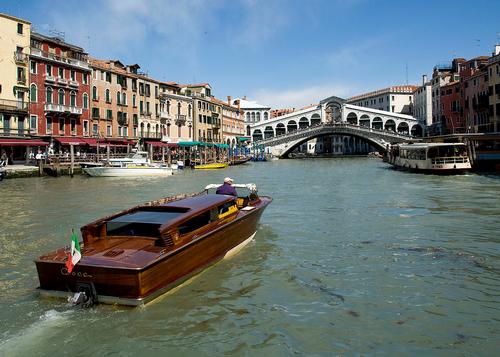 VeniceiPhoto: Safron Blaze CC 3.0 Unported no changes made
VeniceiPhoto: Safron Blaze CC 3.0 Unported no changes made
Venice is breathtaking and completely unique. The city was founded about 1500 years ago and consists of more than 100 different islands connected by 150 canals, 400 bridges and many old streets. The historic center of Venice is divided into six districts (sestieri) - Cannaregio, Castello, Dorsoduro, San Marco, San Polo and Santa Croce. All buildings in Venice are propped up with posts driven deep into the ground to create a solid foundation.
| advertisement |
| Hotels Venice |
Location
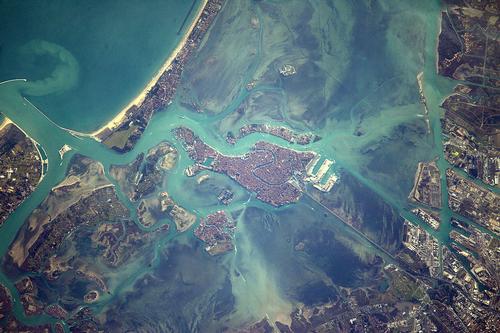 Venice from the airPhoto: NASA in the public Domain
Venice from the airPhoto: NASA in the public Domain
Venice is located in the east of Northern Italy in the region of Veneto, of which it is the capital. Since Venice has so many canals and bridges, it is understandable that many tourists find the city a bit puzzling at times. The Grand Canal runs centrally through the city. There are really only four bridges across the Grand Canal. These bridges are the Ponte dell 'Accademia, the Ponte di Rialto and the Ponte dei Scalzi. The fourth is the more modern Ponte della Costituzione, which connects Piazzale Roma with the train station. In the north and south, the Laguna on which Venice is located consists of a series of islands, such as Burano, Murano and Torcello. Lido di Venezia is located directly east of Venice.
Weather
Spring, summer and early autumn are optimal times to visit the city of Venice, as the weather is warm and generally quite sunny. Venice is busiest in July and August and it can be extremely hot and humid at this time of the year, with occasional afternoon thunderstorms. The best months for sightseeing are March to June, September and October when the city is not too hot. In winter the streets are much quieter and in January they are almost deserted.
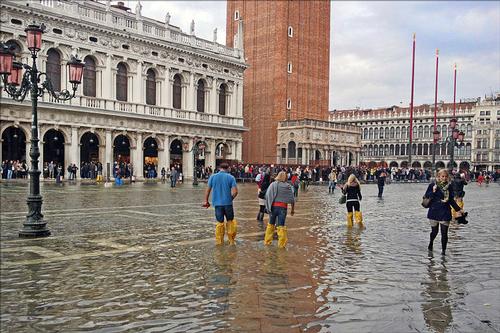 Acqua Alta San Marco square Venice Photo: Jean-Pierre Dalbera CC 2.0 Generic no changes made
Acqua Alta San Marco square Venice Photo: Jean-Pierre Dalbera CC 2.0 Generic no changes made
Between October and March, Venice's seasonal flood, known as the 'acqua alta', takes place. In some low-lying areas, waterproof boots are the only way to get around.
History
The original inhabitants of Venice and the surrounding lagoon were the Veneti. In the 4th and 5th centuries AD, when the Roman Empire fell into decline following attacks by the Huns and the Lombards, more and more Romans settled in the region. The area was part of the Byzantine Empire until the 8th century, at which time the first Doge (leader) is elected and Venice becomes a city-state. Much of Venice's architecture dates back to this time. In particular the Doge's Palace, construction of which began around 814.
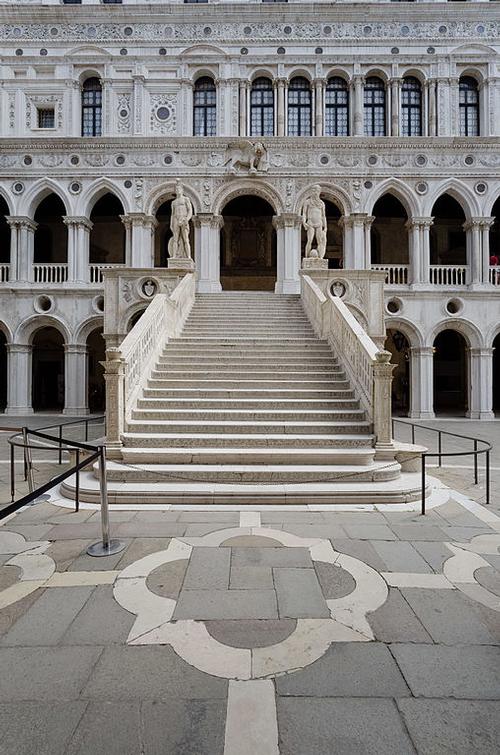 Doge's palace VenicePhoto: Beng LIEU SONGH CC 4.0 International no changes made
Doge's palace VenicePhoto: Beng LIEU SONGH CC 4.0 International no changes made
At the end of the 10th century, the city gained the right to trade with the Byzantine Empire. This alliance has significantly increased the prosperity of the city. In the 13th century, the city became even richer by offering ships and provisions to Crusader armies. The Venetian influence spread even further, thanks to the adventures of Marco Polo, who left Venice to go to China in 1271. The height of Venice's power was between the 13th and 15th centuries, the Venetian galleys ruled the Mediterranean and the city became the most prosperous in all of Europe.
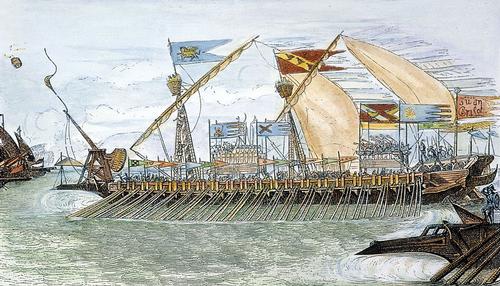 Venetian GalleyPhoto: Public Domain
Venetian GalleyPhoto: Public Domain
From the 15th century on, Venice began to lose some of its former status. This may have been due in part to the loss of some eastern territories to the Ottoman Turks. It may also have been caused by the growing popularity of other trade routes. Whatever the reason, the city's decline continued into the 16th century and well beyond. In 1797, Napoleon defeated the Venetian Republic and introduced his own government. Later the city fell into Austrian hands. Only in 1866 Venice became part of the new kingdom of Italy.
In the late 19th century, Venice became an avid patron of the arts. Exhibitions were held here, including the first International Art Exhibition, which was attended by Umberto I. From the mid-1850s, the city was linked to the mainland by a railway, making it much easier for tourists to visit the sights. In 1932, the very first Venice Film Festival was held.
 Venetian Lion symbol of the Venice Film festival Photo: Tryphon CC 3.0 Unported no changes made
Venetian Lion symbol of the Venice Film festival Photo: Tryphon CC 3.0 Unported no changes made
The Second World War went off with very little bomb damage for Venice, with Allied forces taking the city in April 1945. In 1966 Venice was not so fortunate. A terrible flood destroyed many of its historic buildings and precious treasures. Flood prevention has recently been promoted, which it is hoped will prevent further disasters in the city.
Sights
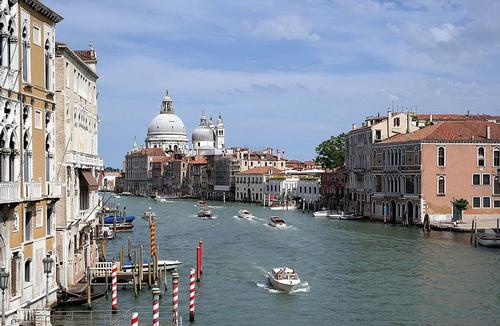 Canal Grande VenicePhoto: Luca Aless CC 4.0 International no changes made
Canal Grande VenicePhoto: Luca Aless CC 4.0 International no changes made
Venice is a fabulously beautiful and above all car-free city. Most traffic is over water and connecting streets can be very busy with pedestrians. These are mainly tourists, because not many Venetians live in their city anymore. House prices are sky-high and there is a constant rattle of suitcase wheels. Having said this, it remains an experience to take the Vaporetto (boat bus) from the station to Piazza San Marco on the Grand Canal, past palaces and the famous Rialto Bridge from the sixteenth century. For the more affluent tourist, a gondola ride on the Grand Canal is of course also recommended, it can even be serenaded by the Gondeliers.
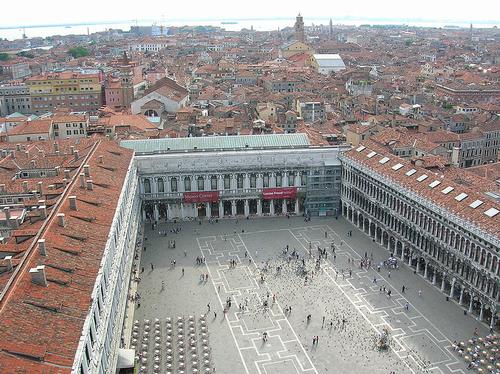 Piazza San Marco VenicePhoto: Pavel Semerikov CC 3.0 Unported no changes made
Piazza San Marco VenicePhoto: Pavel Semerikov CC 3.0 Unported no changes made
Piazza San Marco is the beating heart of Venice. This square has been a popular tourist attraction for centuries and is also home to many hundreds of pigeons. The square is the center of Venetian life and there is always an exciting atmosphere in this busy square, with many cafes often with live music. Undoubtedly one of the most beautiful squares in the whole world, St. Mark's Square is surrounded on three sides by arcades with public buildings. The beautiful round domes of the remarkable Basilica San Marco add to the atmosphere. As well as the 15th-century Torre dell'Orologio tower and the two pillars with the city's patron saints: the figure of Theodore and of course the winged lion of San Marco himself.
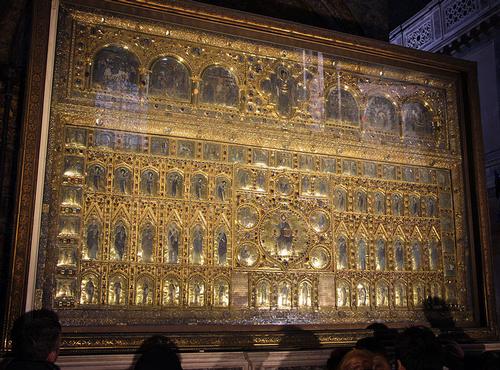 Pala D'Oro in the San Marco basilica in VenicePhoto: Sailko CC 3.0 Unported no changes made
Pala D'Oro in the San Marco basilica in VenicePhoto: Sailko CC 3.0 Unported no changes made
With more than two square kilometers of beautiful mosaics, St. Mark's Basilica is one of Venice's most famous landmarks. The church is home to many beautiful treasures, such as the 'Pala d'Oro' - a masterpiece in gold, many precious glasses, amphorae, cups, carvings and statues. This huge church is spectacular and built according to the Greek cross plan, with five enormous domes. It's a crowd pleaser and the best is to get there early.
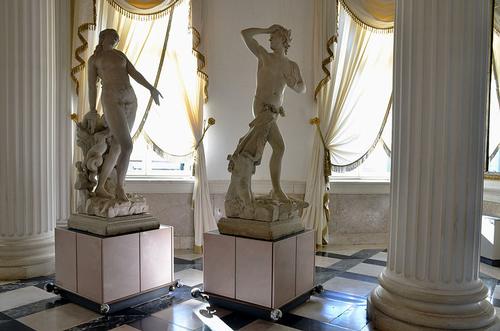 Sculptures by Canova in Museo Correr, VenicePhoto: Vassil in the public domain
Sculptures by Canova in Museo Correr, VenicePhoto: Vassil in the public domain
The Museo Correr is a large museum dedicated to the history of Venice. The museum has many interesting rooms with a varied mix of historical objects and beautiful works of art. The neoclassical rooms highlight some of Canova's sculptures. Venetian paintings from the 13th to 16th centuries are showcased in 11 rooms, and other highlights include women's shoes nearly 500 years old, with heels so high that it was nearly impossible to walk in unaided. There are also large detailed maps of the city from the 16th century and beautiful Gothic artwork, including glittering golden Madonnas.
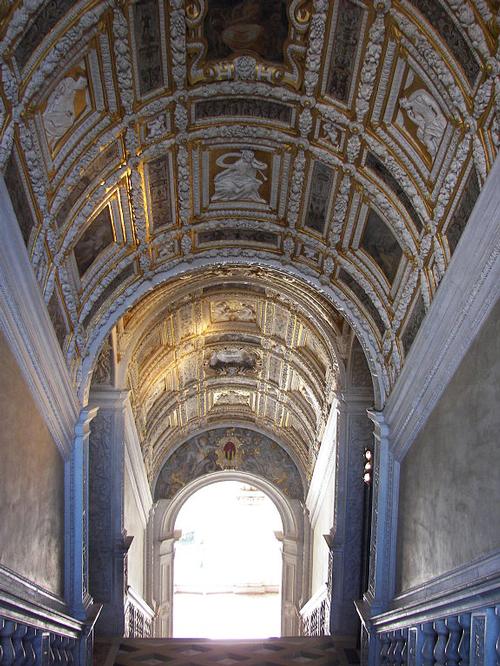 Scala d 'Oro in the Doge's palace in VenicePhoto: Wknight 94 CC 3.0 Unported no changes made
Scala d 'Oro in the Doge's palace in VenicePhoto: Wknight 94 CC 3.0 Unported no changes made
The Doge's Palace (Palazzo Ducale) was originally built as a fortress in the 9th century and the building has been enlarged over the years. Construction was largely completed by 1438, although further embellishments have since been added. Inside, there are many large rooms with frescoed ceilings and beautiful furnishings. A tour of the palace takes visitors through many richly decorated rooms and halls on three floors. Highlights include the Scala d'Oro, a lavish ceremonial staircase designed in 1555, and the Sala del Maggior Consiglio - the Great Council Chamber, which has been the center of executive and legal power in Venice. There are paintings by artists like Tintoretto, Tiziano and Veronese and you can also visit the old prison cells, where the infamous Cassanova was held for several years before escaping.
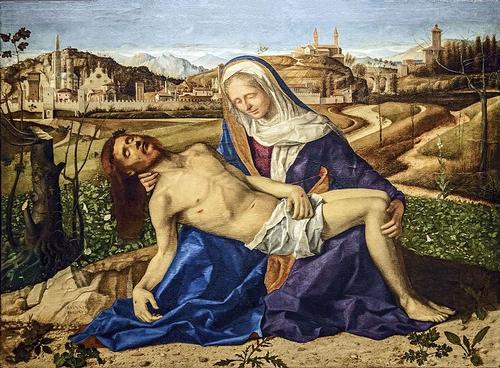 Pieta by Bellini in Galleria dell Accademia in VenicePhoto: Public Domain
Pieta by Bellini in Galleria dell Accademia in VenicePhoto: Public Domain
The monumental building of the Galleria dell Accademia is located in the prestigious center of the Scuola Grande of Santa Maria della Carità, one of the oldest lay brotherhoods in the city. The Church of Santa Maria of the same name and the Monastery of Canonici Lateranensi, built by Andrea Palladio, are an integral part of the Accademia. The collection includes a large number of Venetian paintings from the Byzantine era. There are Renaissance works by Bellini, Carpaccio, Giorgione, Veronese, Tintoretto, Tiziano and Gianbattista Tiepolo. There are also eighteenth century masters such as Canaletto, Guardi, Bellotto and Longhi. These artists have had a great influence on the entire history of European painting.
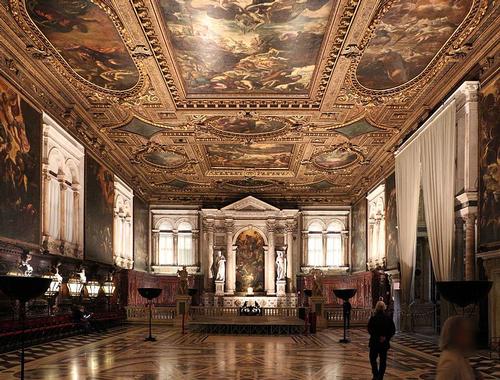 Scuola Grande di San Rocco in VenicePhoto: Sailko CC 3.0 Unported no changes made
Scuola Grande di San Rocco in VenicePhoto: Sailko CC 3.0 Unported no changes made
The Scuola Grande di San Rocco was founded in the late fifteenth century. It is one - and certainly the best preserved - of the six Scuole Grandi (Great Guilds) of Venice which, together with the minor brotherhoods, formed the network of brotherhoods of a religious nature for many centuries. Construction began in 1517 and the finishing lasted until 1560. Four years later, Jacopo Tintoretto began decorating the rooms. This work, which took him until 1588, is one of the most fascinating painting ventures ever known. From 1564 to 1567 he painted 27 works on the ceiling and walls of the Sala dell'Albergo, from 1576 to 1581 25 works on the ceiling and walls of the Sala Superiore and from 1582 to 1587 the eight large canvases in the Sala Inferiore and finally in 1588 the altarpiece. Because many works have been painted on the ceilings, there are mirrors for the visitors.
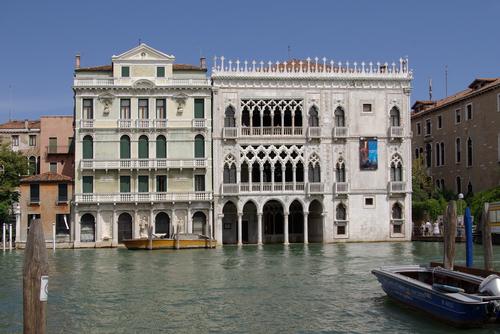 Ca D'Oro in VenicePhoto: Janericloebe in the Public Domain
Ca D'Oro in VenicePhoto: Janericloebe in the Public Domain
The Ca D'Oro is a fantastic Venetian Gothic palace built in the 15th century and it is full of elaborate sculptures and ornaments once covered in gold. This is probably the finest example of Gothic architecture in Venice, the facade was also once gilded, hence the name 'Golden House'. After extensive restoration, the colors of the exterior of this beautiful mansion are once again reflected in the Grand Canal. The Ca 'd'Oro is now home to the Franchetti Gallery, which houses a fine collection of Venetian Byzantine art, including paintings, sculptures, bronzes, marble busts and Flemish tapestries. You can also see masterpieces by famous artists such as Mantegna, Diana and Carpaccio. Downstairs there is a beautiful well, built by Bartolomeo Da Bon in 1427.
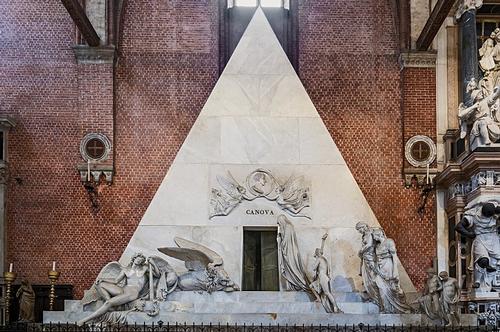 Funerary monument Canova in Sante Maria Gloriosa dei Frari in VenicePhoto: Didier Descouins CC 4.0 no changes made
Funerary monument Canova in Sante Maria Gloriosa dei Frari in VenicePhoto: Didier Descouins CC 4.0 no changes made
The Basilica Santa Maria Gloriosa dei Frari was built by the Franciscans in the 13th century in the San Polo district. The imposing brick building is one of the city's three churches, built in the Italian Gothic style. As with many Venetian churches, the exterior is rather plain. The interior contains the only choir screen still present in Venice. Inside you can admire special paintings by Giovanni Bellini. There are tombs of various celebrities, the composer Claudio Monteverdi, the sculptor Antonio Canova and the painter Titian are buried here.
Tips
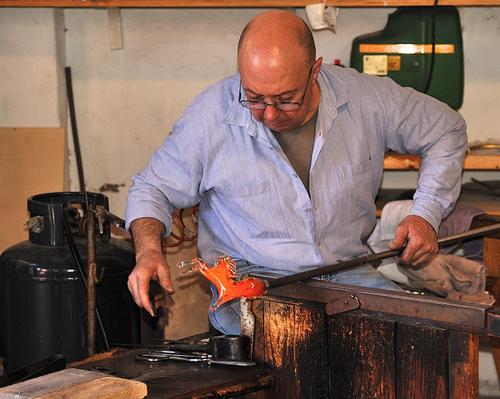 Glassworker op the island MuranoPhoto: Saffron Blaze CC 3.0 Unported no changes made
Glassworker op the island MuranoPhoto: Saffron Blaze CC 3.0 Unported no changes made
The island of Murano is fun to take a trip to. It is easily accessible with the Vaporetto and has long been known for its glass blowing art. You can view and buy the glass in shops or visit workshops. Murano glass in often colorful. There is also a representative glass museum on Murano and you can visit a number of churches or have lunch by the water on this island. The Venice Biennale is held every two years, a leading international exhibition of visual art.
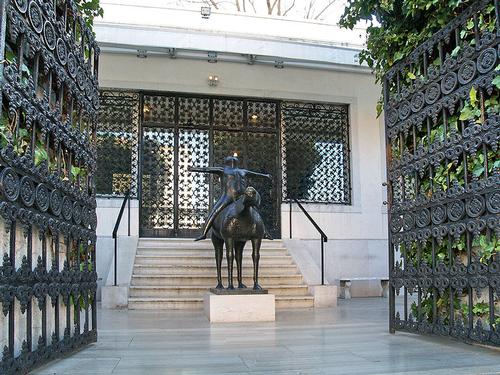 Entrance to Guggenheim museum in VenicePhoto: Edal CC 3.0 Unported no changes made
Entrance to Guggenheim museum in VenicePhoto: Edal CC 3.0 Unported no changes made
The Peggy Guggenheim collection is housed in the rather luxurious apartments in the Palazzo Venier dei Leonii, where the wealthy Peggy Guggenheim used to live, who died in 1979 at the age of 81. This beautiful museum may be small, but it is packed with 20th century art, paintings and sculptures. Peggy was a serious collector and protector of the art, highlights include works by Picasso, Kandinsky, Pollock, Motherwell and her ex-husband, Max Ernst. The building was intended to be a grand four-story palace, but it was never completed and has only one floor.
Useful links Venice
BBC Country ProfilesWorld Fact Book Explore all Countries
How to call
Last updated June 2025
Copyright: Team - The World of Info